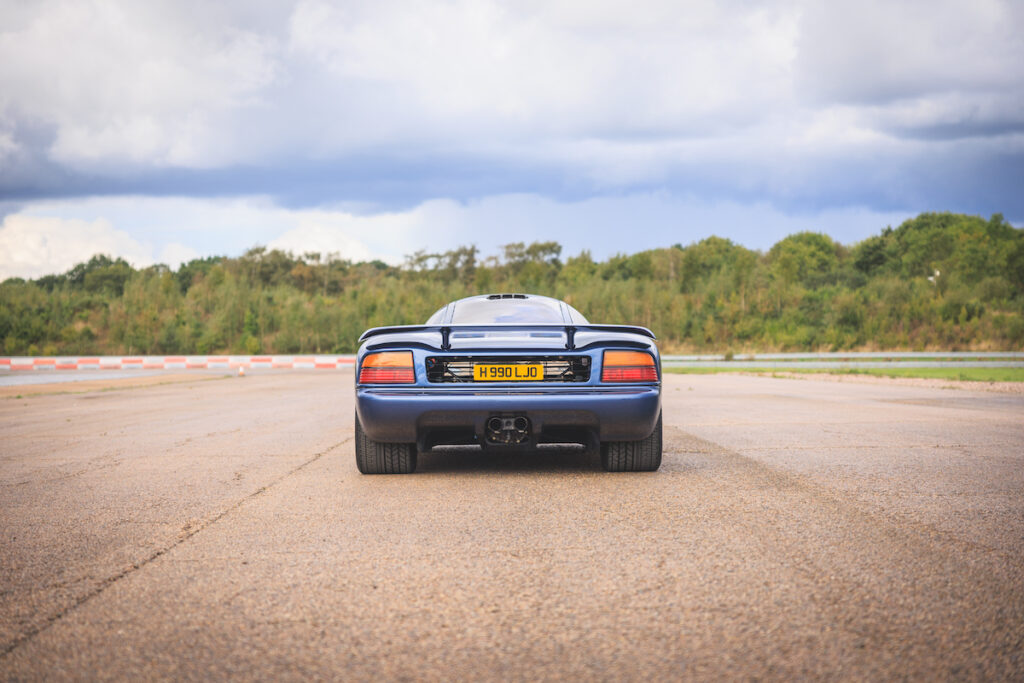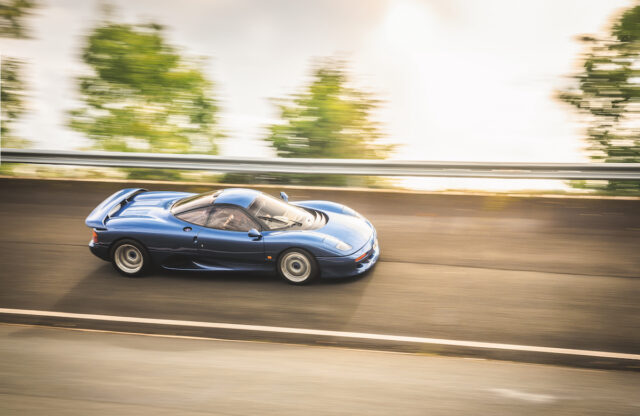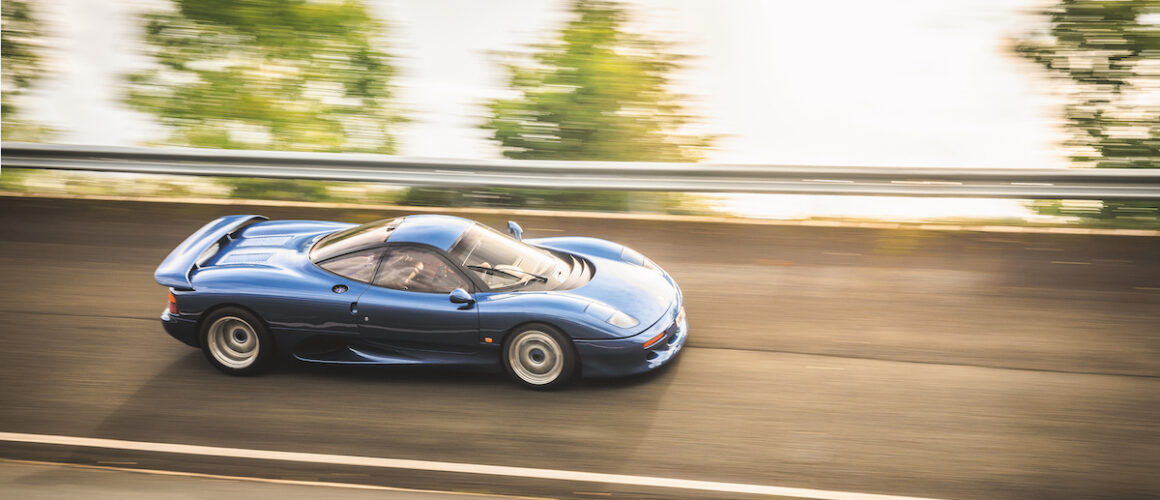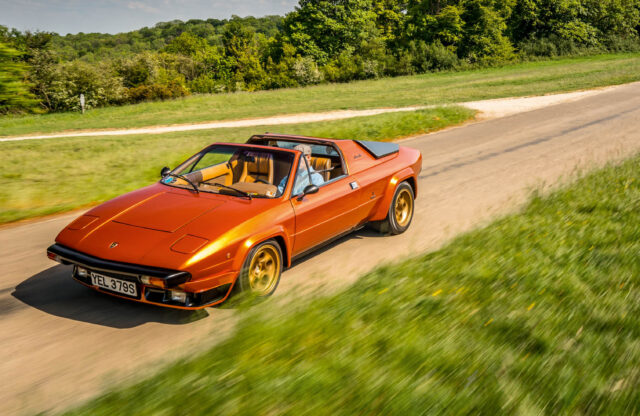The all-carbonfibre Jaguar XJR-15 was Tom Walkinshaw’s vision of what the XJ220 should have been
Fen End may have its own banked section but, this 100m mini-Karussell aside, it is not exactly the Nürburgring. In fact, having been built on the old Honiley Airfield site near Wroxall only five years ago, in circuit longevity terms the tarmac on JLR’s test track in the Midlands is barely dry. That said, you can still see the shape of the WW2 airfield in the track, about half of
it directly overwriting what was there, half underlining the remainder like shadow text.
The former Prodive site crams a lot into a small space, offering one long (almost mile-long) straight, a shorter one that sweeps left before a 180º loop onto the short top section and into a standard right, which propels you back onto another long, undulating straight. Those two long stretches are connected by that sharp slingshot bank… or a flat, ground-level option for those with either less velocity or smaller cojones. Three lanes wide, but flanked on both sides with Armco and no run-off, the Fen End track doesn’t offer a massive amount in terms of gradient change, but on my first visit I find that the home of JLR’s SVO (Special Vehicle Operations) is more than enough to properly test a car. Even a proper monster like the JaguarSport XJR-15.
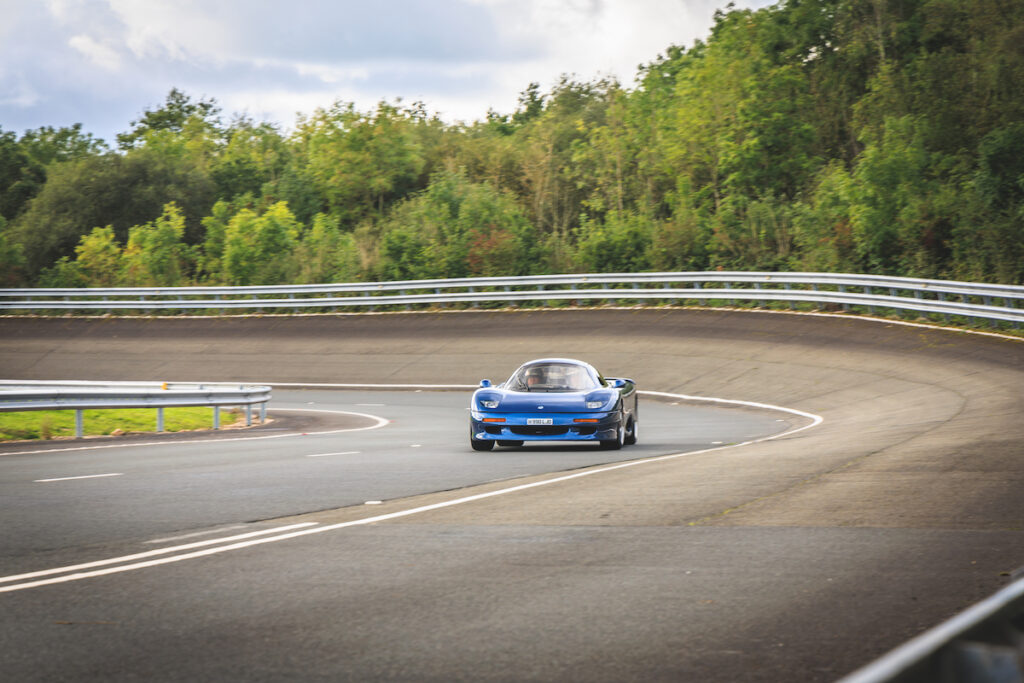
A lot has been written about the Jaguar XJR-15 – indeed, the model’s history was excellently and comprehensively covered by James Page in Octane 197 following the astonishing 2018 Goodwood gathering of 11 cars, owners, and notables from the XJR-15 project – but the most succinctly pertinent description I ever heard was when owner Valentine Lindsay enthused: ‘It is the next best thing to a McLaren F1 at a 20th of the price.’* (*Valuation correct at the time of the claim, and more or less still is.) There was a fundamental difference, however: the F1 was a road car that was rather handy on the track; the XJR-15 was a racer that proved to be surprisingly, er, legal on the road.
Constructed of guts, genius and steely, oft-fractious Scot, the project came about when Touring Car and Endurance magician Tom Walkinshaw was left unimpressed by Jaguar’s XJ220 show car and, after the on-track successes of TWR’s Tony Southgate-designed XJR-8 and -9, started working on a road car to exploit the public euphoria. With Peter Stevens enlisted and working on a carbon XJR-8 tub, the team soon realised that a barely modified roadgoing derivative of the racer was no-go.
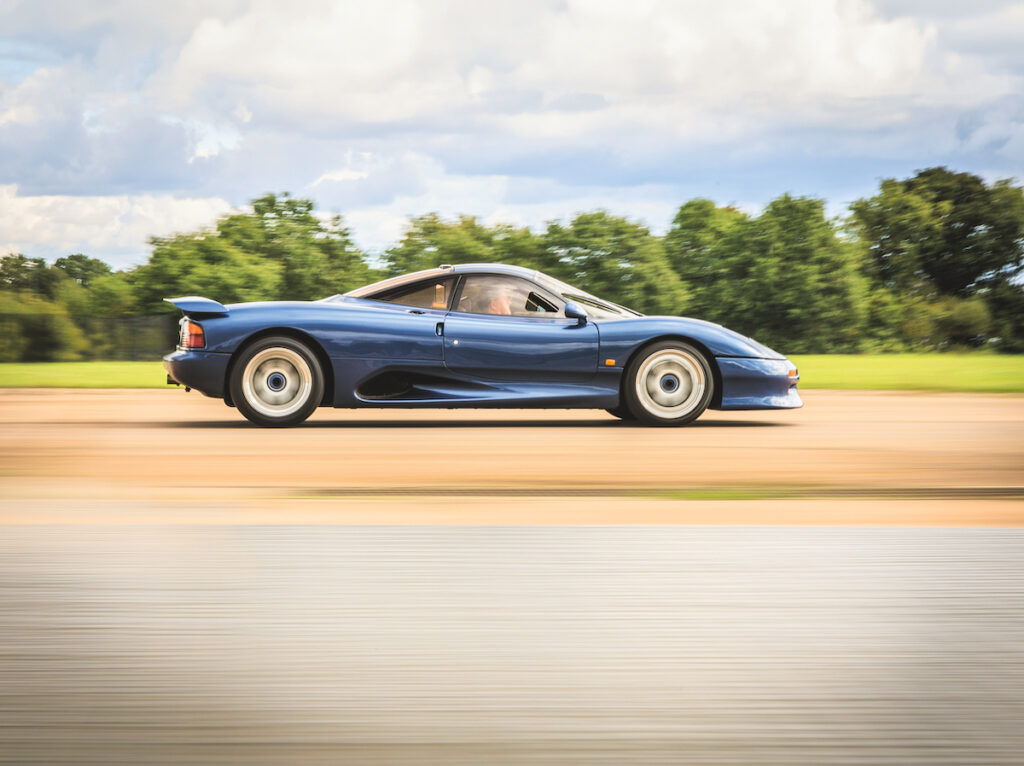
The result was a pretty ambidextrous model, quite far removed from the Group C racers that spawned it conceptually, being wider, taller and further off the deck. It is powered by a detuned 450bhp 6.0-litre Group C engine, which could be bought in five-speed manual road spec with a small degree of creature comfort or as a racer with six-speed crash ’box and none. With Jaguar preferring to focus on the XJ220, the £450,000 XJR-15 was marketed solely via the three-race pro-am JaguarSport Intercontinental Challenge series with its headline-grabbing $1m jackpot, which firmly established it in the public psyche as a racer. Yet of the 52 pioneering all-carbon-and-Kevlar chassis built, five were 7.0-litre LMs, there were 16 (perhaps 17) racers, and the remainder (more than half) road cars, the run book-ended by a pair of TWR R9Rs.
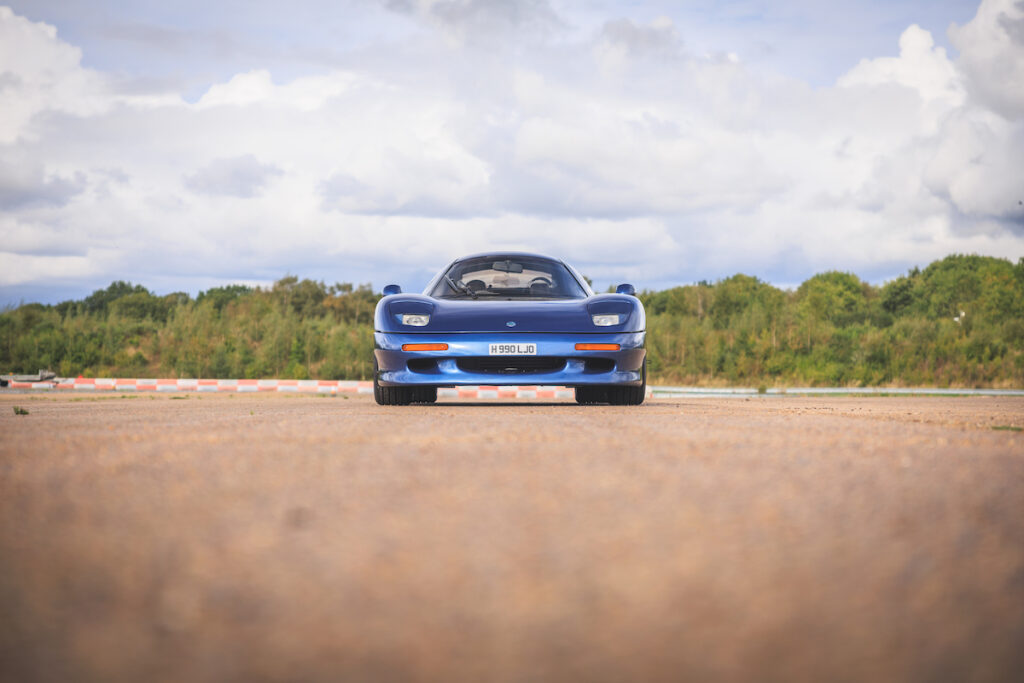
It is for one of those ‘road’ cars that we gather at Fen End, by invitation of Jaguar Land Rover Classic, which recently was charged with selling this example. The car in question is chassis 21, delivered new to Japan and the first XJR-15 tested there. This very car was the one featured in the famously sumptuous Car Graphic magazine in September 1991, wherein its name was uttered in the same breath as Ferrari F40. And the Jaguar X220.
It came back to the UK in 2014 and three years later was extensively recommissioned over a year by a marque expert. The well-documented (and illustrated) history shows the works included new tyres (that’s a plantation’s worth of rubber), fuel and water pumps, pipework and hoses and a new clutch, as well as the all-important replacement fuel bladder. Off-diary works included uprated hinges and locks for easier engine bay access via a motorised system developed in Italy.
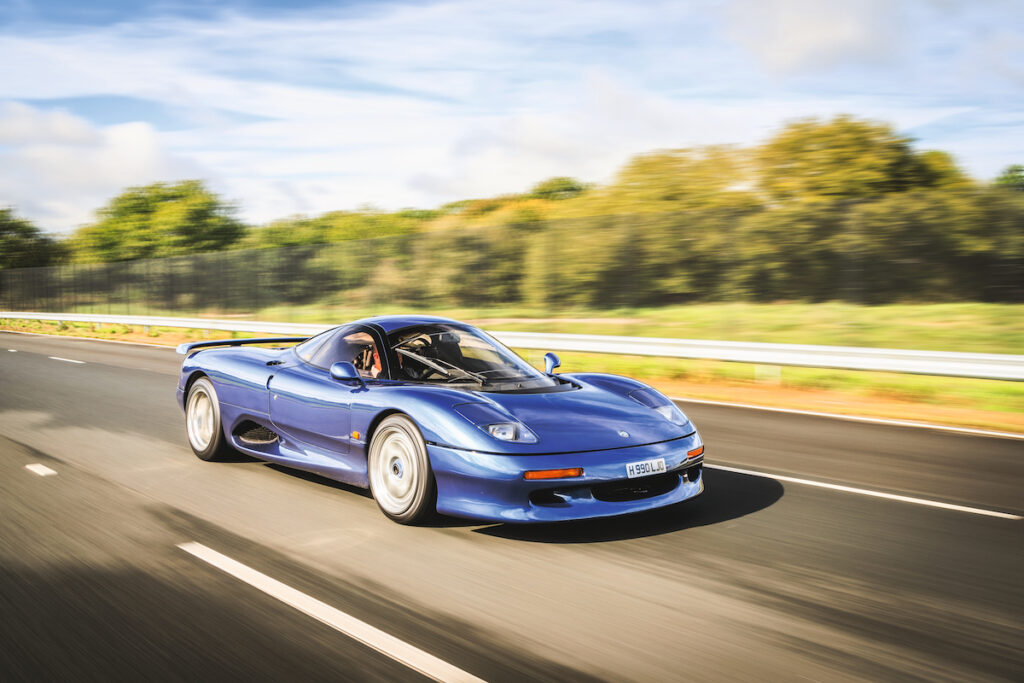
In the past couple of months this FIA-approved, fully registered XJR-15 was thoroughly checked over by JLR Classic and then briefly lay fallow before being marketed for sale with a full service and a year’s warranty for the new owner. That brief window of opportunity was where Octane snuck in.
It seems appropriate to be at a former RAF WW2 airbase because there is something of the aircraft in the XJR-15’s profile, the long-canopied cockpit merging into that subtly bewinged tail that screams aerodynamics as much as aesthetics. The side view is like a wing over a frequency variation graph, the pop-up lights not disrupting the flow of the bodywork. They may be more beautiful than practical, though, because when we put them up for the photographer, he laughs. The beauty in those mellifluous (second outing for that word in two issues, sorry) lines is pulled into focus when you clock that this car rides on sizeable Pirelli P Zero 245/40 ZR17s. And that’s just the fronts; the rears are a whopping 335/35.
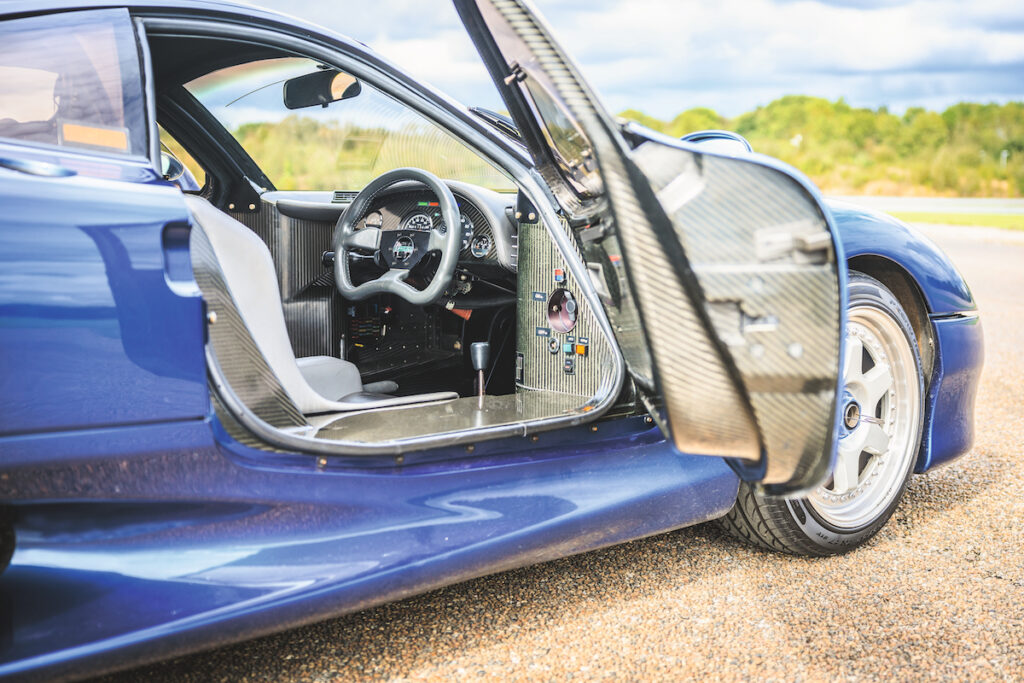
Step over the very wide sill and drop into the cockpit and you find yourself cocooned in carbonfibre weave. The driving position is not central, but feels it a bit because the driver is angled towards the centre of the car. That and those wide sills just add to making it very cosy for two people in there despite the best efforts of Stevens and his team. So much so that there is a slender divider to the left of the pedals to stop you playing footsie with your passenger.
Everything important is to the driver’s right: the kill switch, the four small toggles to turn it on, and the stubby lever and little graphic to tell you the pattern of the five-speed ’box. It doesn’t look or feel much like a road car, a sensation only amplified by the full cage and harnesses. While we were allowed to drive without a helmet for slower photography laps, a lid was compulsory for the faster stuff so you don’t bang your bare bonce on the cage. To be fair, you repeatedly clonk it with the helmet; while initially thankful for that protection, you then wonder whether it is only the extra cranial bulk provided by the hat that causes you to hit the cage in the first place.
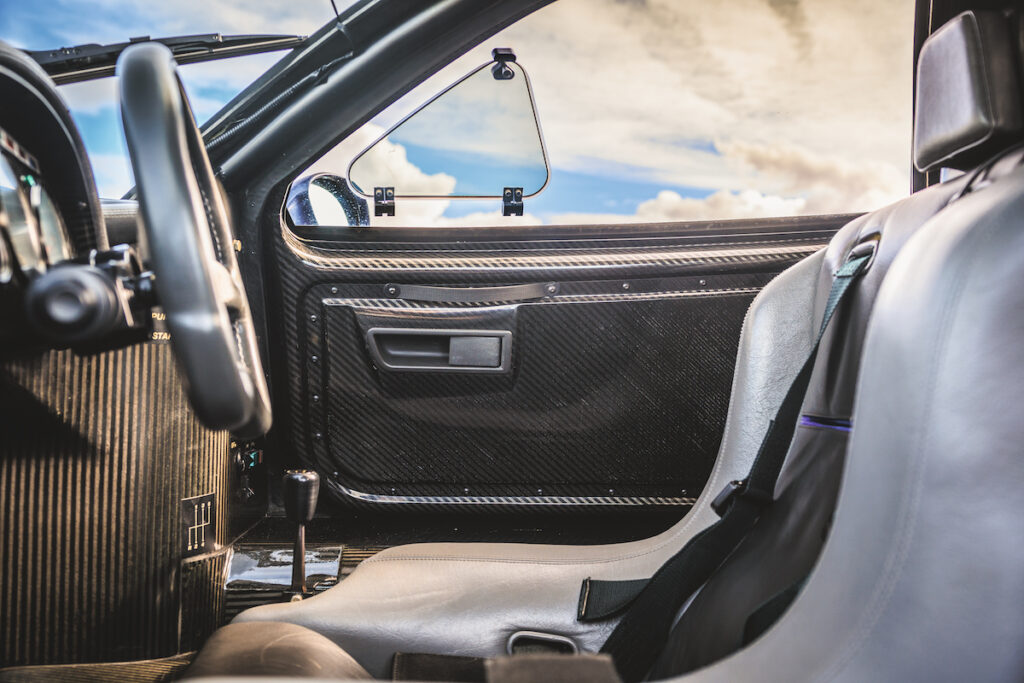
Getting the XJR-15 going is simple: the starter churns, a couple of jabs on the throttle plus 20% of throttle get it to catch. Even at idle the XJR-15’s V12 emits a demonic rumble like distant thunder but oddly appropriate at this site, which once echoed and reverberated to the prop-drone of Beaufighters and Mosquitos, Hurricanes and Spitfires, as they took to the skies to defend the UK’s precious, targeted industrial heartland from the Luftwaffe.
Given the stats, you expect it to be savage off the line, but it isn’t. It is hardly slovenly but it is more momentum-gatherer than jowl-wobbler and builds speed with a dogged and relentless determination. After a few laps, when confidence has built a little, you dive onto that long straight and floor it and the Jaguar hoovers up the horizon with guttural greed; you can be well over 150mph and only just dipping into fifth when you crest the slight hump halfway down that gives first sight of
the rapidly looming banking.
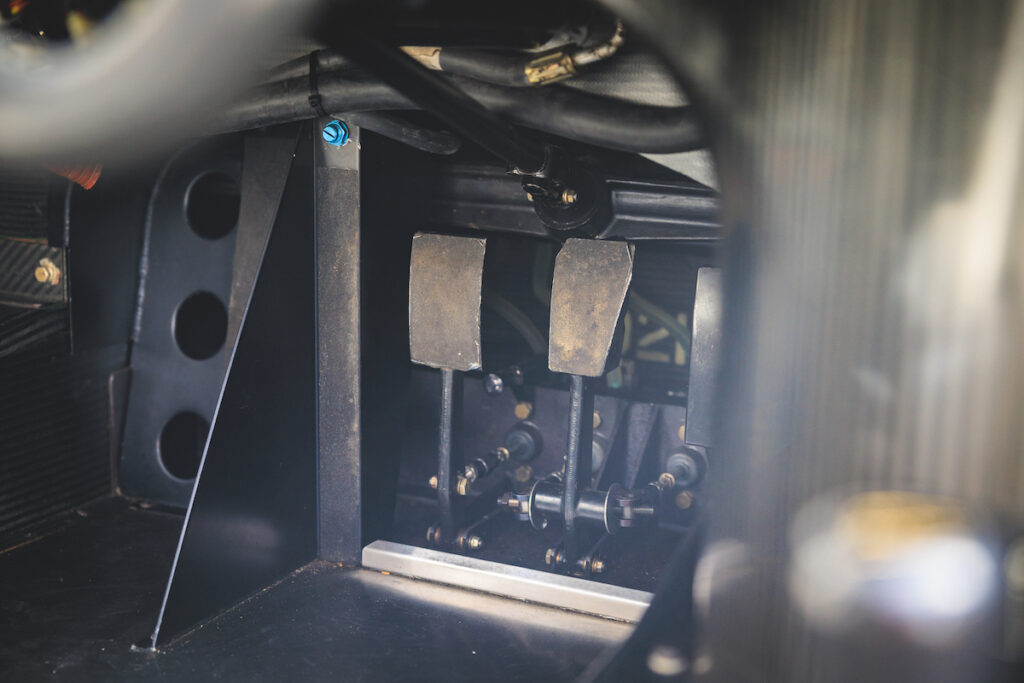
We’re not using the banking so need to scrub more speed quicker and drop three cogs to get around the hairpin on the flat, a process that isn’t always as easy as it sounds. The braking is not a problem – the AP Racing set-up feels extraordinary – and neither is the clutch, which illogically and counterintuitively is easy to ride at low speeds (as you need to for our purposes), even though it’s basically in or out at high speed, but the ’box has less certainty. Despite a close gate and a stubby lever with enough resistance to suggest precision, it is a bit loose and second and third don’t always want to be found. You need to be careful because second is very close to reverse and there is no detent, but by lap three I have a failsafe and, by lining the lever up with the seat stitching, safe passage into second is assured. Seat stitching? Road car.
In that same corner you sense most the approach of the XJR-15’s limits; the wobble as you brake hard and the weight transfer make you aware that almost a third of the car’s total weight is in its engine behind you, the same deadened pendulum sensation when you put the power down a little too early on exit. At my speeds it doesn’t ever feel as if it will properly break traction though, the Pirellis offering none of the looseness that drivers railed against when the cars were Bridgestone-equipped for the Intercontinental Challenge.
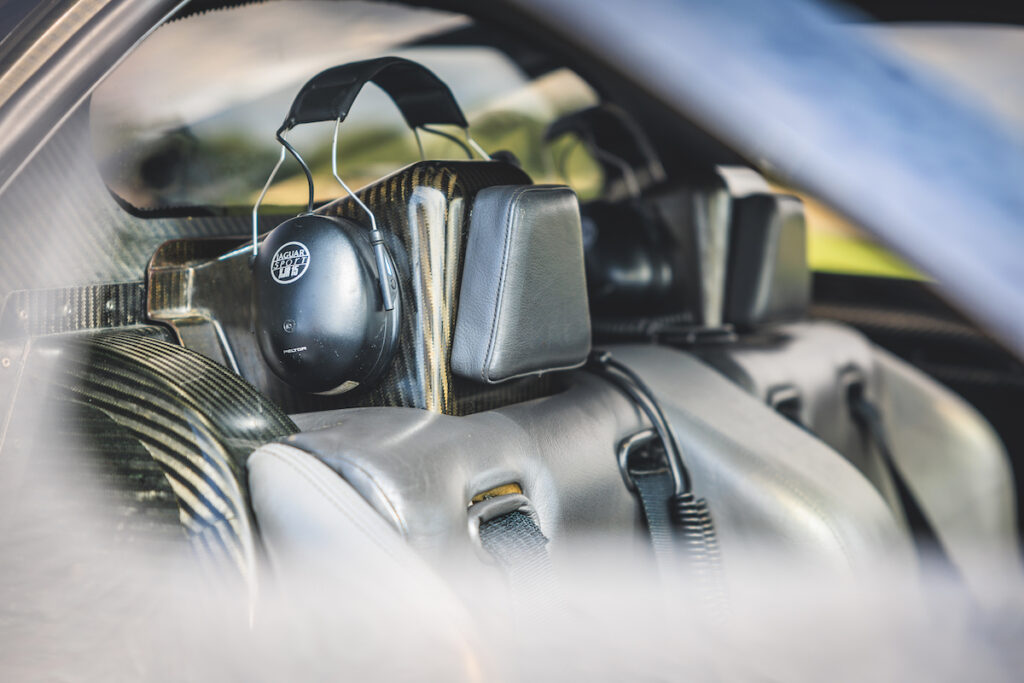
As it is set up now, the JaguarSport car corners almost unnervingly flat, a virtue to add to a weirdly impressive turning circle. With those considerations and your helmet off, you could almost be lulled into thinking it is more road car than racer, but corrective reminders include the pedal box, serious kit on which you notice that the right side of the brake pedal has been shaved off, presumably to aid heel-and-toeing. Then there is the ventilation, or lack of it. Two small XJ-S vents sit incongruously on the dashtop, while small flaps in the windows don’t let in enough air whatever speed you are doing. Then, hiding in plain sight, is the steering wheel, which to look at, to feel and to use screams full-on race car. Is there anything more mentally empowering in driving than wrapping your fingers around the flat bottom and levering it around as you corner?
The numbers concur: the electronic speedo reads to 220mph and the 7000rpm rev-counter has no redline. After our outing there were still only 1362 miles on the clock. Race car.
Is it the equal of McLaren’s F1? Not in terms of usability, though comfort is transformed the moment you take your helmet off, notice the little headrest and lose yourself in admiration for the endurance racers who spent extended periods in here. On the other hand, the JaguarSport car is more raw, more physically involving at lower speeds, more shocking.
If anything, the JaguarSport XJR-15 feels like the McLaren F1’s progenitor. That it is, or ever was, a road car is insane. But insane is good, I like insane, we need more insane.
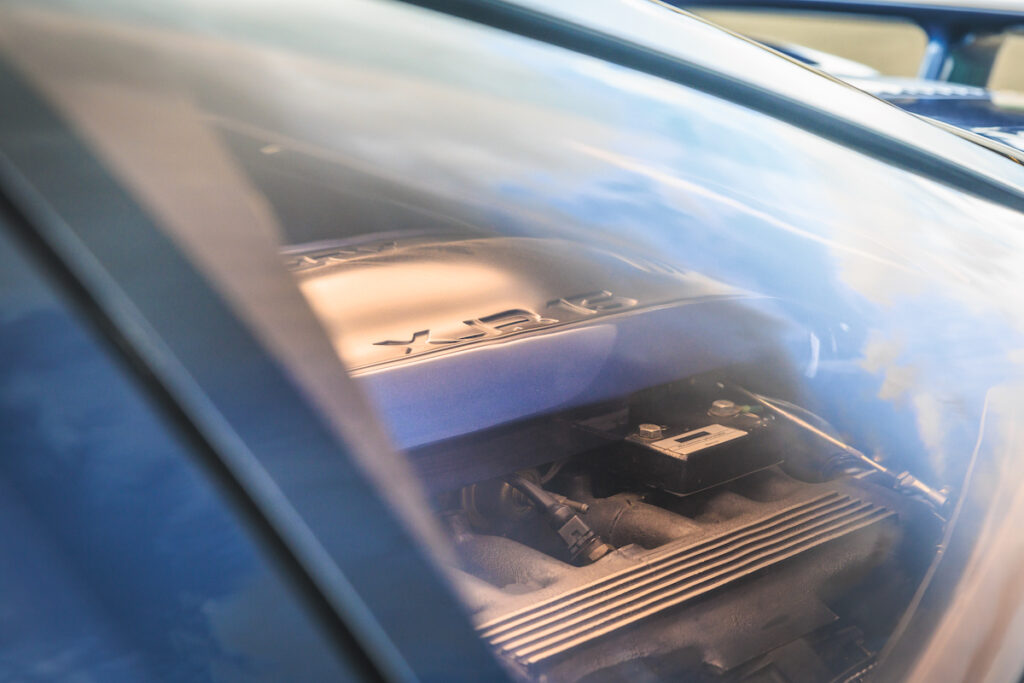
Factfile – 1991 JaguarSport XJR-15
Engine 5933cc 60º V12, Zytek electronic fuel injection and engine management Power 450bhp @ 6250rpm Torque 420lb ft @ 4500rpm Transmission Five-speed synchronised manual, or six-speed unsynchronised manual, rear-wheel drive Suspension Front: double wishbones, pushrod-actuated lateral coil springs, Bilstein dampers, anti-roll bar. Rear: double wishbones, vertical coil springs, Bilstein dampers, anti-roll bar Steering Rack and pinion Brakes Discs, AP Racing four-pot calipers Weight 1050kg Top speed 191mph 0-60mph 3.2sec
This article was originally published in Octane 247, January 2024
